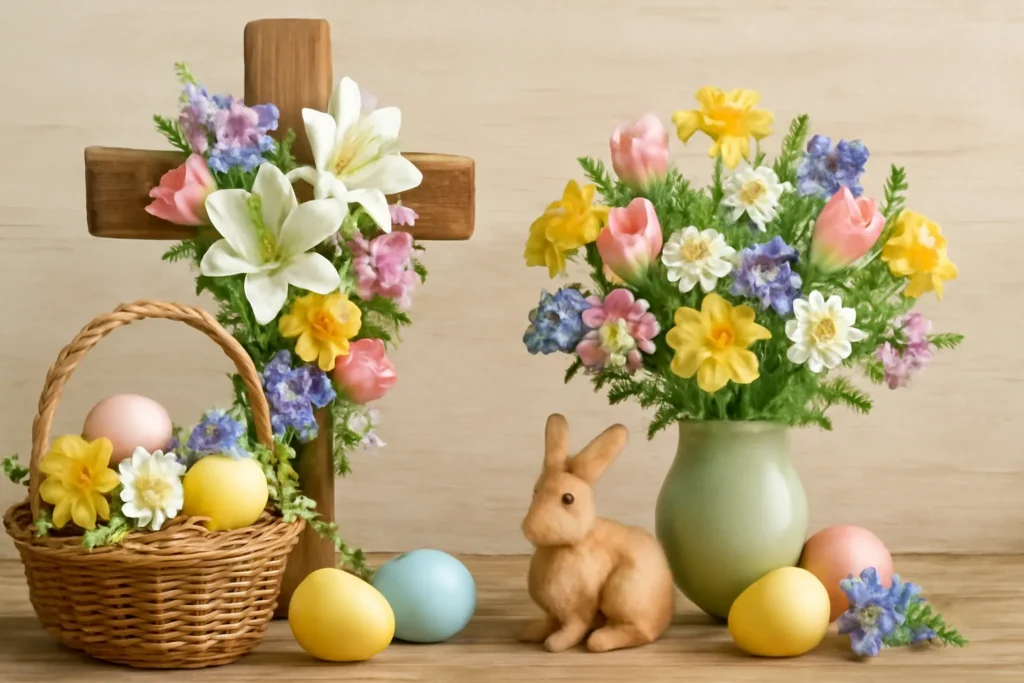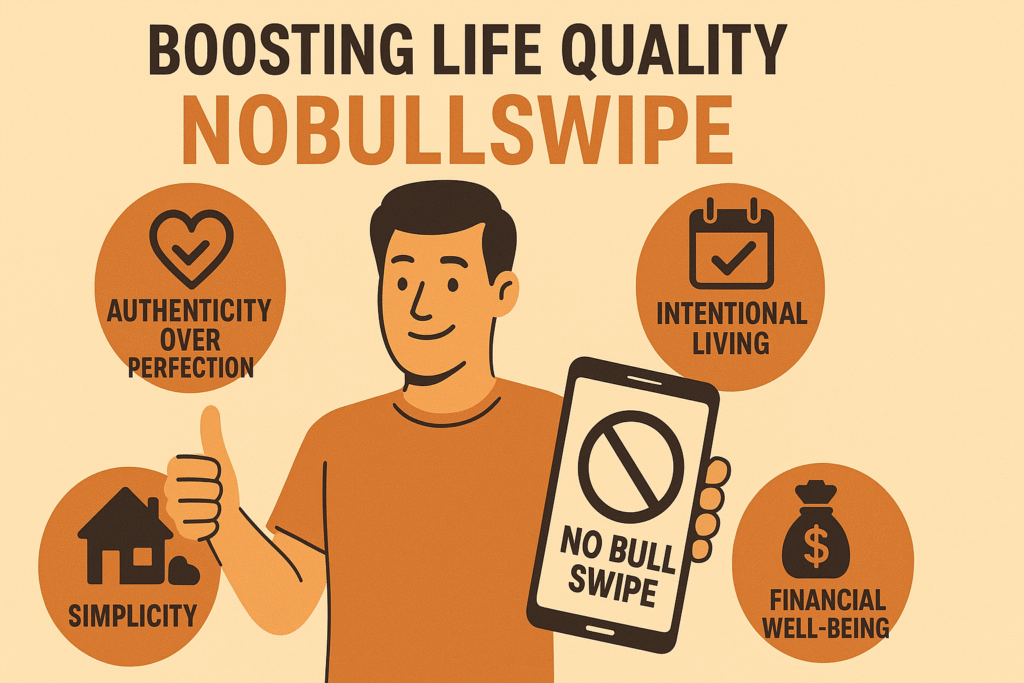Easter has always been a season of hope, joy, and new beginnings. One of the most beautiful ways to honor this spirit is through Easter with flowers. Across cultures and generations, flowers have been used to celebrate life’s renewal, and Easter is the perfect time to bring their color and fragrance into our homes, churches, and gatherings.
The holiday itself carries deep religious meaning, symbolizing the resurrection of Christ and the promise of new life. Flowers naturally echo this message: lilies for purity, daffodils for rebirth, tulips for fresh starts, and many others that bloom right as spring awakens.
As a horticulturist, I see Easter as more than just a holiday—it’s nature’s reminder that after every winter, life blooms again. In this guide, I’ll share not only the traditional Easter flowers and their symbolism, but also practical care tips, seasonal insights, and creative arrangement ideas to help you celebrate with confidence. Think of this as your friendly, expert-backed roadmap to making this Easter truly blossom.
1. Why Flowers Matter in Easter Celebrations
Flowers are more than just decorations at Easter. They carry centuries of meaning, tying together faith, nature, and the joy of spring. Each bloom has its own story, and together they create a living language that speaks of hope, purity, and renewal.
Symbolism & Spiritual Roots
- Easter Lily – The Easter lily is the flower most closely linked with the holiday. Its pure white petals are often seen as a symbol of Christ’s resurrection, purity, and divine hope. That’s why you’ll find lilies placed on altars and in homes throughout Easter week. Their trumpet-like blooms almost seem to announce the good news of new life.
- Daffodils – Among the first flowers to emerge in spring, daffodils symbolize new beginnings and rebirth. Their golden color reflects sunlight and joy, reminding us that winter has passed and brighter days have arrived. They’re also a favorite for Easter baskets and home decorations.
- Tulips, Hyacinths, and Irises – These classic spring flowers each carry their own renewal themes. Tulips represent cheerful new starts, while hyacinths are associated with sincerity and peace. Irises, often in purple or blue, symbolize faith, wisdom, and the promise of hope. Together, these blooms make Easter arrangements vibrant and meaningful, connecting both the season and the celebration.
Historical and Cultural Practices
Flowers at Easter are not only symbolic but also deeply tied to tradition. For centuries, churches have been decorated with lilies, daffodils, and other spring flowers to honor the resurrection. Altar arrangements and flowering crosses with flowers remain beloved customs, where a wooden cross is covered in fresh blossoms as a sign of life triumphing over death.
In many communities, families also create Easter baskets with flowers or decorate their homes with fresh blooms to welcome guests. Across cultures—from European churches adorned with lilies to American traditions of Easter gardens—flowers have served as a bridge between faith and the beauty of the natural world.
2. Traditional Easter Flowers & Meaning
When you think of Easter with flowers, certain blooms instantly come to mind. Each one carries a meaning that ties perfectly to the themes of faith, renewal, and joy. Below is a guide to the most beloved Easter flowers and what they represent.
- Easter Lily – The pure white petals of the Easter lily have become the symbol of the holiday. They represent purity, resurrection, and Christ’s hope. In churches, you’ll often see lilies filling the altar, their trumpet-like blooms standing tall as if to announce new life.
- Daffodil – Bright yellow daffodils are among the first to bloom after winter. Their cheerful faces represent new life, renewal, and the promise of spring. They bring instant warmth to Easter baskets and table displays.
- Tulip – Tulips symbolize new beginnings and happiness. Their meanings vary by color: red tulips for love, yellow for cheer, purple for royalty, and white for forgiveness. Even fringed tulips, with their feathery edges, are popular for Easter, adding texture and flair to arrangements.
- Hyacinth – Known for their sweet fragrance and dense clusters, hyacinths symbolize peace and sincerity. In pink, purple, or white, they add both beauty and scent to Easter displays.
- Iris – With its tall stems and striking purple or blue flowers, the iris symbolizes hope, wisdom, and faith. In Christian tradition, it is also linked to the Virgin Mary, making it a meaningful addition to Easter décor.
- Gerbera Daisy / Daisy – Daisies are simple yet powerful symbols of innocence and purity. Gerbera daisies, with their larger, colorful faces, bring cheerfulness and positivity to spring celebrations.
- Easter Cactus – Unlike the spiny desert cactus, this plant blooms with soft, star-shaped flowers around Easter. It’s a symbol of quirky renewal and makes a thoughtful, lasting gift.
- Ranunculus – Layered and elegant, ranunculus symbolizes charm and sophistication. Their petals create a rose-like fullness that adds luxury to bouquets and centerpieces.
- Peony – Though slightly later in season, peonies represent prosperity and nostalgia. Their lush, round blooms are favorites for Easter brunch arrangements and spring weddings alike.
- Anemone – These bright, open-faced flowers bring a modern pop of contrast to Easter bouquets. They symbolize anticipation and are perfect for adding bold touches to a pastel-themed table.
- Mini Hydrangea / Hydrangea – Hydrangeas symbolize gratitude, fullness, and heartfelt emotion. A tip from florists: if hydrangea blooms wilt, cut the stems at an angle and submerge them in cool water to revive them.
- Sweet Pea, Orchid, Primrose, Muscari, Dianthus Spray, Viburnum, Lilac, and Baby’s Breath (Gypsophila) – These supporting blooms expand the Easter palette. Sweet peas carry a message of gentle pleasure, orchids add exotic grace, primroses symbolize eternal love, muscari (grape hyacinth) represent trust, dianthus sprays offer delicate color, viburnum symbolizes harmony, lilac adds fragrance and nostalgia, and baby’s breath ties everything together with purity and softness.
Together, these flowers not only beautify Easter celebrations but also weave layers of meaning that connect faith, nature, and family tradition.
3. Creative Ideas for “Easter with Flowers”
Flowers don’t just sit in a vase, they can become the centerpiece of Easter joy. Whether you’re decorating your home, preparing church displays, or planning a family gathering, here are creative ways to celebrate Easter with flowers.
- Simple Bouquets – You can never go wrong with a mix of lilies, daffodils, and tulips. This trio is fresh, symbolic, and easy to arrange. Place them in a clear vase to let the colors speak for themselves.
- Easter Basket with Flowers – Instead of filling a basket only with candy and eggs, weave in flower stems such as daisies or hyacinths. A few sprigs of greenery tucked around painted eggs make the basket look alive with spring.
- Easter Cross Decorated with Flowers – A deeply meaningful tradition is the flowering of the cross. Families or church members cover a wooden cross with lilies, daffodils, and other blooms to symbolize life’s triumph over death.
- Centerpieces for Church or Home – Cluster peonies, ranunculus, and hydrangeas in pastel-colored vases for an Easter brunch table or church altar. Their full blossoms bring softness and elegance to the setting.
- Easter Bunny with Flowers – For a playful touch, some florists create bunny shapes using blooms. It’s whimsical and especially fun for children’s parties or Easter egg hunts.
- Pressed Flower Table Décor – Inspired by artist Tricia Paoluccio, try pressing blooms from your garden along with florist flowers. Use them as delicate accents on Easter table linens, cards, or place settings for a handmade touch.
- Easter Pictures with Flowers – Arrange flowers around photo frames or use them as props in family Easter pictures. A backdrop of tulips or a daisy garland can make family memories extra special.
- How to Dye Easter Eggs with Flowers – Flowers aren’t only for display. Press petals onto eggs before dyeing to create natural imprints, or use them in boiling water to produce soft, plant-based colors.
- Easter Egg Trees – A tradition in parts of Europe, branches are decorated with colorful eggs. Add floral picks or wrap the branches with fresh blooms for a festive, spring-ready tree.
- Mixing Wild & Shop Flowers – Don’t be afraid to combine store-bought blooms with ones you pick from your own garden. Wildflowers alongside lilies or tulips give an organic, just gathered look that feels authentic and welcoming.
These ideas show how flowers can be more than decoration, they become symbols, conversation pieces, and cherished family traditions during Easter.
4. Seasonal Availability & Selection Tips
One of the joys of celebrating Easter with flowers is that it falls right at the heart of spring—when gardens and markets are bursting with new blooms. Choosing the right flowers often comes down to knowing what’s naturally in season.
- Early Spring Classics – Easter usually arrives when lilies, narcissus (daffodils), and tulips are at their best. These early bloomers are easy to find, affordable, and instantly connect your décor with the season’s spirit of renewal.
- Mid-to-Late Spring Favorites – As spring continues, flowers like peonies, anemones, and lilacs start to shine. If Easter falls later in April, these blooms can add depth and variety to your arrangements. Their lush textures and fragrances bring richness to both home displays and church settings.
- Mixing Bloom Times – A smart tip is to combine flowers that peak at different times. For example, pair early bulbs like daffodils with later arrivals like ranunculus or lilac. This not only makes your arrangements more interesting but also extends the freshness of your display as some flowers fade earlier than others.
- Unique Seasonal Choices – If you want your Easter décor to stand out, try less common picks such as muscari (grape hyacinths), fringed tulips, or miniature hydrangeas. These blooms add originality and often spark conversation because they’re not always seen in every Easter bouquet.
As a rule of thumb, always choose flowers that are fresh and locally available. Seasonal blooms last longer, look more natural, and often carry stronger fragrance than flowers shipped from far away.
5. Practical Decorating
Flowers are most powerful when they become part of your everyday Easter setting. Beyond symbolism, it’s about how you arrange and present them—turning simple stems into meaningful décor.
Floral Arrangements & Centerpieces
A well-planned centerpiece can transform an Easter table or church altar. Don’t be afraid to mix the familiar with the unexpected. Classic Easter lilies and daffodils pair beautifully with the layered elegance of ranunculus, the playful charm of anemones, or the lush fullness of peonies. Together, they create balance between tradition and modern style.
Containers make a difference too. Instead of always using glass vases, try arranging your flowers in vintage pitchers, colorful coffee mugs, or woven baskets. These add rustic charm and help your decorations feel personal and inviting. A bouquet of tulips in a white enamel jug, for example, feels both fresh and timeless.
DIY Floral Projects
For a hands-on approach, consider DIY floral projects that bring creativity into your Easter celebration. One inspiring idea is pressed-flower décor, a trend championed by artist Tricia Paoluccio. She combines florist blooms with wild botanicals to create table runners, place cards, and art pieces with a delicate, handmade look.
Pressed flowers can be used to decorate Easter cards, picture frames, or even clear glass candle holders. They’re a beautiful way to preserve spring’s fleeting blooms and add a natural, artistic touch to your holiday table.
6. Essential Care Advice: Make Your Flowers Last
Fresh flowers are at the heart of Easter celebrations, and with the right care, they can stay beautiful long after the holiday. Here are some tried-and-true tips I recommend as a florist.
- General Vase Tips – Always start with a clean vase. Fill it with fresh, cool water and add a little flower food if available. Cut stems at a slight angle before placing them in the vase—this helps them drink more water. Remove any leaves that would sit below the waterline, since they can decay and shorten the flowers’ lifespan.
- Hydrangea – These big, beautiful blooms sometimes wilt quickly. To revive them, cut the stems at a slant and submerge the flower heads in cool water for about 30 minutes. They often bounce back looking fresh.
- Daffodils – While daffodils are cheerful, they release a sap that can shorten the life of other flowers. Keep them in a vase by themselves for the first few hours before mixing them with tulips or lilies.
- Tulips – These stems continue to grow after cutting, often bending toward the light. Recut them every couple of days to keep them looking neat and refreshed.
- Hellebores & Lilacs – Both are prone to drooping. To keep them standing tall, score the stems vertically with a knife and dunk the flower heads in cool water for a quick boost.
- Peonies – If you’d like your peonies to bloom more slowly, refrigerate them at night. This gentle chill extends their beauty for several extra days.
- Hydrangea Revival & Daisies – Hydrangeas sometimes need extra help, so don’t hesitate to smash the bottom of their stems with a hammer to improve water uptake. Daisies, on the other hand, are naturally low-maintenance and pair well with almost any other flower.
- Expert Note – I often keep a small spray bottle handy to lightly mist delicate blooms like anemones and ranunculus. This keeps their petals hydrated and fresh, especially under warm indoor lighting.
By following these care tips, your Easter flowers won’t just look beautiful for the holiday—they’ll continue to brighten your home throughout the week.
7. Expert Insights & Trustworthy Background
Easter flowers are not just beautiful—they carry layers of history, faith, and artistry. Understanding these stories adds depth to every bouquet or decoration you create.
- The Legend of Easter Lilies – One Christian legend tells of lilies blooming in the Garden of Gethsemane, where Jesus prayed before his crucifixion. According to tradition, lilies sprouted wherever drops of His sweat fell to the ground, making them a powerful symbol of purity and resurrection. This story explains why lilies are such a central flower in Easter celebrations.
- Snowdrops in History – Long before lilies and tulips were common Easter symbols, snowdrops held meaning in Christian poetry and folklore. Their pure white petals were seen as a sign of innocence and the Holy Trinity, often celebrated as the first brave flowers to bloom after winter.
- Modern Floral Trends – Today, Easter flower traditions continue to evolve. Many people are turning to eco-friendly arrangements, homegrown blooms, or pressed flower art to decorate their spaces. Artist Tricia Paoluccio has brought back the beauty of pressed florals, encouraging people to mix wild botanicals with florist flowers for natural, artistic tablescapes. This blend of tradition and creativity keeps Easter décor both meaningful and fresh for modern homes.
By weaving together these legends, histories, and trends, we see how flowers connect the past with the present—bridging faith, culture, and personal expression in every Easter celebration.
8. FAQ Section
Q1: What flowers last longest for Easter displays?
With the right care, peonies, lilies, and hydrangeas tend to last the longest. Peonies can be refrigerated overnight to slow their opening, lilies stay fresh in cool water if you remove the pollen, and hydrangeas can be revived by submerging their heads in water when they start to wilt.
Q2: Can I plant Easter lilies after the holiday?
Yes. Once the blooms fade, you can plant the bulbs outdoors in well-drained soil and a sunny spot. With a little patience, they often return to bloom the following year, making them a lasting reminder of Easter.
Q3: Are Easter lilies toxic?
Yes, especially to cats. Even small amounts of pollen or leaves can be harmful, so keep them out of reach of pets. If you have cats at home, consider safer alternatives like tulips, daffodils, or daisies.
Additional Helpful Notes from Other Sections:
- If you’re making an Easter basket with flowers, add blooms like daffodils or daisies alongside eggs and greenery for a fresh spring look.
- A cherished tradition in many churches is decorating Easter crosses with flowers. Covering a wooden Easter cross with flowers or an Easter cross decorated with flowers is both symbolic and beautiful.
- Families with kids often enjoy playful décor such as an Easter bunny with flowers, made by shaping blooms into bunny forms.
- Wondering what flowers are associated with Easter? Classics include lilies, daffodils, tulips, and hyacinths—but modern choices like ranunculus and peonies are also popular.
- Capture memories with Easter pictures with flowers by using floral frames or backdrops for family photos.
- You can even try crafts like learning how to dye Easter eggs with flowers, using petals and leaves to create natural prints and colors.
Conclusion
Celebrating Easter with flowers is more than decorating with pretty blooms, its about honoring a tradition that blends faith, symbolism, and the joy of spring. From lilies that echo the story of resurrection to tulips, daffodils, and hyacinths that signal renewal, each flower carries a meaning that enriches the season.
Whether you’re creating an Easter basket filled with flowers, decorating a cross, or trying your hand at pressed-flower art, every choice adds a personal touch. The beauty of Easter flowers lies not only in their colors and fragrance but also in the memories and traditions they help create.
So this year, explore combinations, mix classic favorites with unexpected blooms, and let your arrangements bring both soul and style to your celebrations. May your home and heart feel blooming this Easter.

Hi, I’m Bilal, the founder of outofmagazine.com. I love sharing fresh ideas, stories, and helpful insights on all kinds of topics that spark curiosity. My goal with this site is simple—to create a space where readers can find inspiration, useful tips, and engaging reads on lifestyle, trends, and everything in between.



